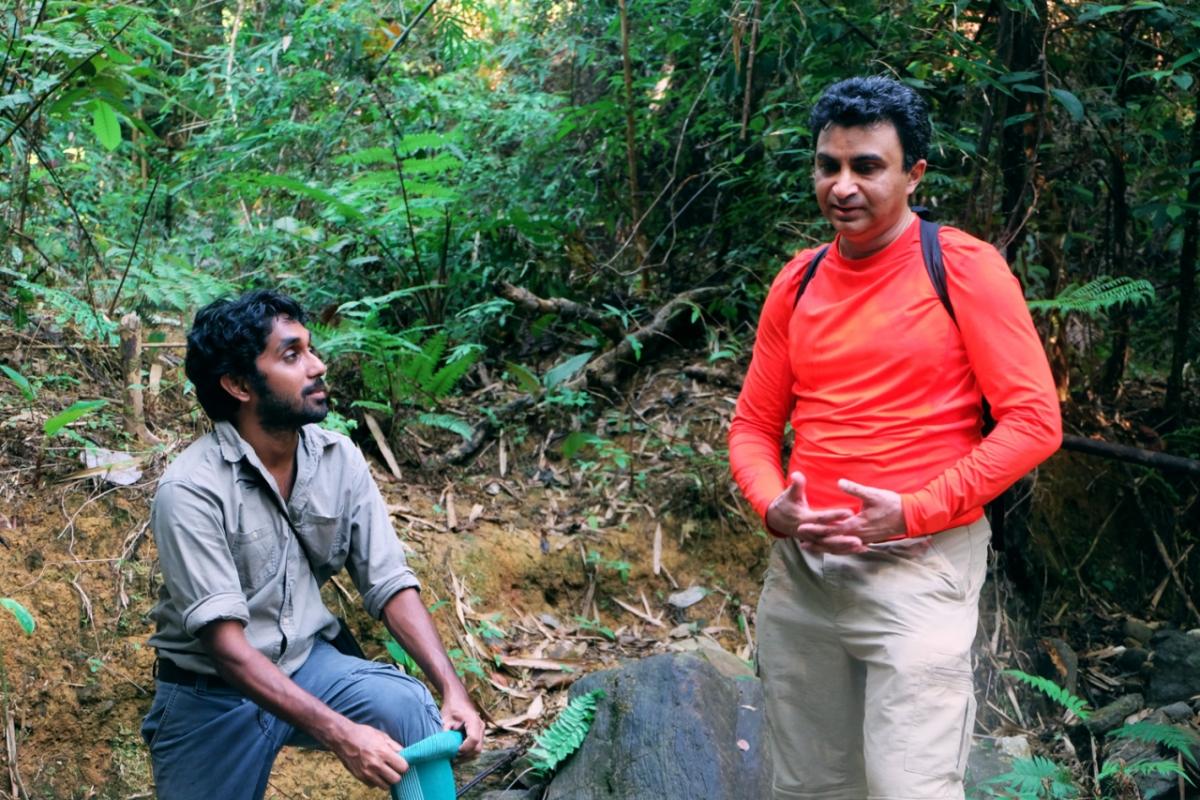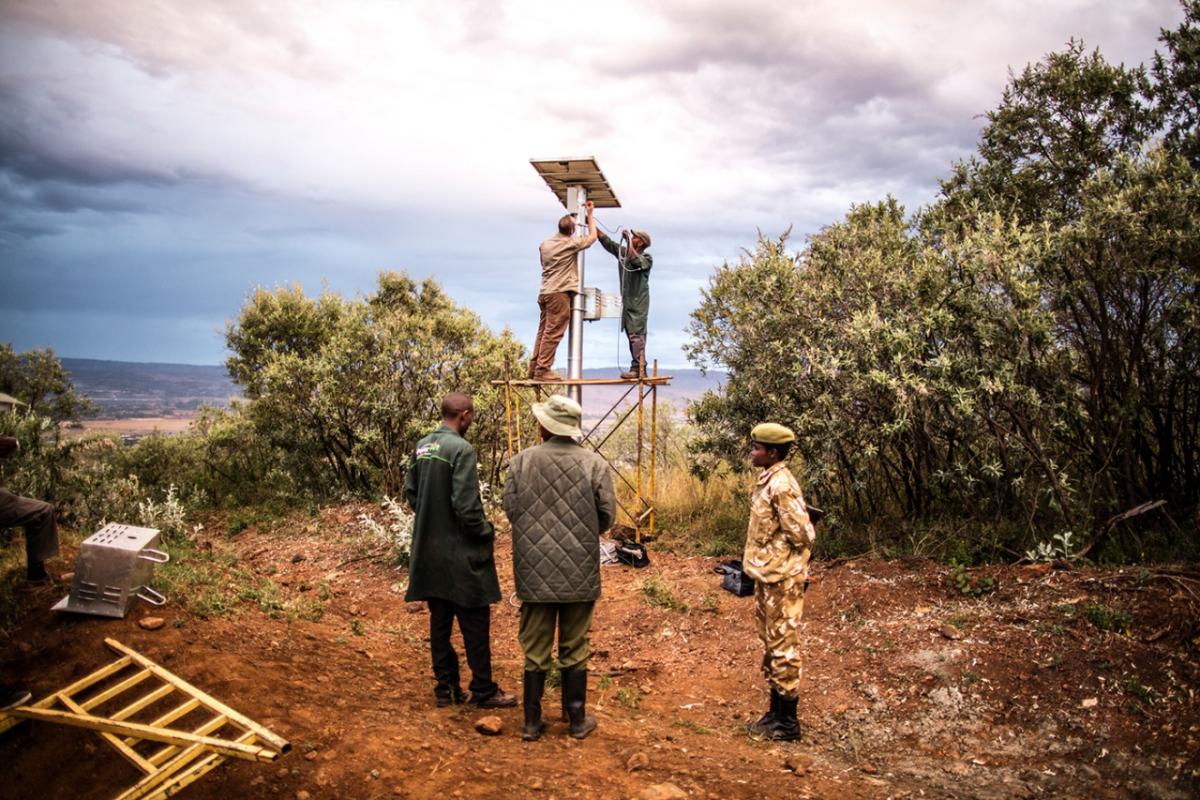How Technology Is Protecting Endangered Species
Sharon Gaudin
Cambodia is home to 16 globally endangered species, like the Asian elephant, tigers, and leopards. Conservationists there are working with a Harvard computer scientist to stop the poaching that is pushing so many species to the brink of extinction.
It's just one of a growing number of collaborations bringing technologists and conservationists together to fight to protect wildlife from being wiped off the face of the planet. Environmentalists have long had a daunting challenge ahead of them when it comes to protecting animals from poachers, habitat loss, pollution, and climate change. They're now hoping, though, that technologies like artificial intelligence (AI), drones, GPS trackers, smart cameras, and the cloud could give them the upper hand they've been looking for.
"It is horrifying to think about the possibility that we may be leaving a world behind where keystone species like tigers, elephants, and rhinos may just be gone," says Milind Tambe, the Gordon McKay Professor of Computer Science and director of the Center for Research in Computation and Society at Harvard University. "We don't want to have to tell our children, 'Well, they're all gone.' We don't want a world like that."
According to the United Nations Environment Programme, which coordinates the organization's environmental activities, the earth is in the midst of a crisis, with 150 to 200 species of plants, insects, birds, and mammals reportedly going extinct every 24 hours. Biologists say that's 1,000 times the rate that's considered natural extinction. And a 2019 U.N. report notes that approximately 1 million animal and plant species are threatened with extinction, many within decades. More recently, research from the University of Arizona suggests that one-third of plant and animal species could be gone in 50 years.
Here are some more alarming numbers:
- In 2018, three bird species vanished from the earth.
- In Tanzania, the elephant population has dropped by 20 percent in recent years.
- Because of widespread poaching for their horns, as of 2018, there were only two northern white rhinos—both female and incapable of natural reproduction—left in Kenya.
- An estimated 100 African elephants are killed each day by poachers seeking ivory, meat, and body parts.
- Fewer than 450 North Atlantic right whales, including a little more than 100 breeding females, remain. With so many dying and so few being born, scientists warn that the species may not survive more than another 25 years.
With numbers so staggering and dire, conservationists around the globe increasingly are turning to technologists and tech to protect endangered animals and hopefully save them from extinction. Seeing the plight of many species, tech-savvy people are offering their time and expertise to track animals, analyze their habitats and availability of food, and better understand population dynamics.
It's not new for wildlife conservationists to draw on technology like cameras and tracking collars. What's new is the explosion in technologies like AI, machine learning (ML), the Internet of Things, 5G, wireless, and the cloud. And that explosion is touching many industries, including conservation.
"Every industry is going to be changed by it," says Jeff Kagan, an independent industry analyst. "It's transforming so much. It only makes sense that it's transforming wildlife protection. Where before they could never really follow the animals and the paths they take, and the things they're eating, and how they're living, now we can see exactly where these animals are and what they're doing. And think about how much it will advance in the next 10 years."
Outsmarting the poachers
Tambe, who for the past 15 years has been working on how AI can benefit society, made a slight turn six or seven years ago when he began to wonder how technology could be used to protect animals.
The computer scientist is the creator and driving force behind Protection Assistant for Wildlife Security (PAWS), predictive AI software geared to analyze massive amounts of data and then use ML, game theory, and mathematical modeling to take on the poachers decimating many species of animals around the world, including Cambodia.
For instance, intensive poaching of both Cambodian tigers and their prey have caused a rapid decline in the big cats. Today, the World Wildlife Fund reports that there are no longer any breeding populations of wild tigers left in the country, making them functionally extinct there. As for wild elephants, it's generally estimated that only 300 to 600 remain in Cambodia, down from 2,000 in 1995 and 500 to 1,000 in 1999, according to the Food and Agriculture Organization of the U.N.
Normally, park rangers and environmentalists study maps trying to figure out where poachers may be laying traps or lying in wait to kill protected animals. The PAWS system goes beyond human gut instinct and crunches data to predict where the poachers will be working, where the animals are in the most danger, and the best patrol routes for the rangers.
Tambe has been extensively testing PAWS in Cambodia. Conservationists there are finding poaching traps five times more today than they were before they began using his AI-based system.
"I kept saying, 'I think AI can help,'" he says. "Where are the poachers going to hit next? There are thousands of square kilometers in national parks. There are hundreds of rangers. They can't be everywhere. If we can tell them where they need to be [to stop the poaching], that's important."
Now, Tambe's PAWS system is being adapted to work with 800 global national parks that use SMART (Spatial Monitoring and Reporting Tool) software to measure and evaluate the effectiveness of conservation and wildlife law enforcement. With the help of an AI engineer from Microsoft, Tambe has been working for the past six to eight months to integrate PAWS with the SMART software and enable it all to run in the cloud. The system, which so far has been running only on an experimental basis, is scheduled to launch this spring.
"We are honored to be able to contribute," he says. "Some people think of AI being a technology that might be harmful in some ways, maybe taking jobs away. It's a surprise to people that you can apply AI to protect wildlife and use it for social good. The gift to us, as AI researchers, has been opening the door to new AI research challenges so we can advance the state of the art in artificial intelligence."
Saving the salmon
In the Northern California foothills of the Sierra Nevada range, a group of conservationists, the Friends of Auburn Ravine, has been working to protect the local wild Chinook salmon, also known as king salmon. The salmon's numbers have been slashed by logging, dams, overfishing, and pollution. Scientists estimate that 29 percent of the Pacific salmon populations have become extinct in the past 240 years.
The group of volunteers set up cameras to record video of the fish as they migrate upstream to spawn every fall and winter. They were trying to collect data on the number of salmon swimming through, to garner support to improve habitat and facilitate natural migration of adult and juvenile salmon.
The problem was that volunteers were sitting and staring at a seemingly endless amount of video to count fish swimming by.
"It's boring work looking at the videos," says Brad Cavallo, president of Cramer Fish Sciences and a board member of the Friends of Auburn Ravine. "It's easy to miss something because you just space out, but estimates are important so we know how to set harvest limits and how the fish are doing."
Eric Hubbard, a master technologist who has worked at Hewlett Packard Enterprise since 1999, came along and changed that boring, but important, work.
Hubbard says two or three years ago, his dad, who is a volunteer with Friends of Auburn Ravine, told him about video watch parties where volunteers ate pizza and counted fish.
"It was a cool volunteer effort," says Hubbard. "I saw their enthusiasm and effort, but it hurt me to see them doing it so inefficiently. It took huge amounts of hours to look at videos to count these fish. I knew we could automate this and make it so much easier on them."
Hubbard, using the annual 60 hours of paid volunteer time he receives from HPE through the company's community involvement program, HPE Gives, traded out the volunteers' security cameras, which used proprietary protocols that were difficult to work with, for new digital underwater and overhead cameras—dubbed salmon cams—with standard protocols and formats.
Using the Java programming language, Hubbard wrote 5,000 lines of code to create a software program, called FishSpotter, to detect and document passing fish. Raw digital video is uploaded to the cloud, where FishSpotter processes it. Using advanced image recognition to detect activity and identify salmon, FishSpotter automatically produces short GIF highlights of any passing salmon, so humans can then review it to confirm the fish species.
The 2018-2019 migration season was the first to be monitored with the new digital system.
By eliminating the need to watch this large batch of data, FishSpotter was able to pare down 1.6 terabytes and 2,416 hours of raw data into just 101 gigabytes and 20.4 hours of GIF highlights for volunteers to vet and verify as salmon (or other wildlife or activity). In future seasons, Hubbard hopes to further refine FishSpotter's image recognition capabilities to narrow this data set of possible suspects down even further to further accelerate insights.
"I live in a real tech bubble," says Hubbard. "Everyone around me is tech-savvy. I look at these nonprofits and they're outside that bubble. They don't necessarily have the expertise to know what's possible. It's been very gratifying. Initially, it started out as helping people more than the salmon. Then as I got more involved, I was drawn into how important these fish are."
Tech to protect polar bears and rhinos
Colby Loucks, vice president of the Wildlife Conservation Program at the World Wildlife Fund U.S., says technology is increasingly a vital tool in wildlife conservation. And as a leader in the organization's Wildlife Crime Technology Project, which focuses on using cutting-edge technology to fight poaching, he says tech advancements have opened doors.
That's what led the group to create WildLabs.net, a global online community joining conservationists with technologists, engineers, data scientists, and entrepreneurs. With more than 3,000 active users, the group's mission is to use technology to tackle conservation issues, like illegal wildlife trade and poaching.
"We had conservationists trying to use technology, but they weren't technologists by training," says Loucks. "There were a lot of technologists around the world who have the skill sets, knowledge, and desire to help in conservation. WildLabs.net is about connecting those communities. We're piecing together innovative ideas between people with a conservation background and a technology background."
For instance, Loucks says conservationists are combining cameras with ML software trained to distinguish between animals and people. When the system identifies humans, as opposed to zebras or rhinos, passing by a camera, rangers are notified so they can check to see if the people are poachers.
Others in Africa are using thermographic cameras that use infrared radiation to detect elephant and rhino poachers.
Loucks notes that the smart thermal camera technology was installed in 2016 in two different areas of Kenya's Lake Nakuru National Park, a site known for its rhino conservation work. The year before the technology was installed, there were 17 attempted poaching events in the park, he says. The year the system was installed, two poachers were caught, and after that, there were no poaching incidents for the rest of the year and none in 2017 and 2018. In 2019, the system was used to catch another four poachers.
"We feel like that is a big success," says Loucks.
Some scientists are even using environmental DNA (eDNA) technology, which can detect genetic material, such as traces of biological tissue and mucus, obtained directly from environmental samples like soil, sediment, and water. Loucks explains that scientists studying polar bears can scoop samples from streams or footprints in the Arctic snow. From that, they can pull up DNA and use that information to identify what the bears have been eating and even identify individual bears.
"The dream is that you might not see a bear, but if you get a polar bear footprint, you could still know quite a lot about it, which would be a big leap forward for tracking polar bears and seeing how climate change is impacting them," says Loucks. "It is an exciting time to be in the wildlife conservation space right now. We've seen a lot of developments and efforts using technologies to solve problems."



